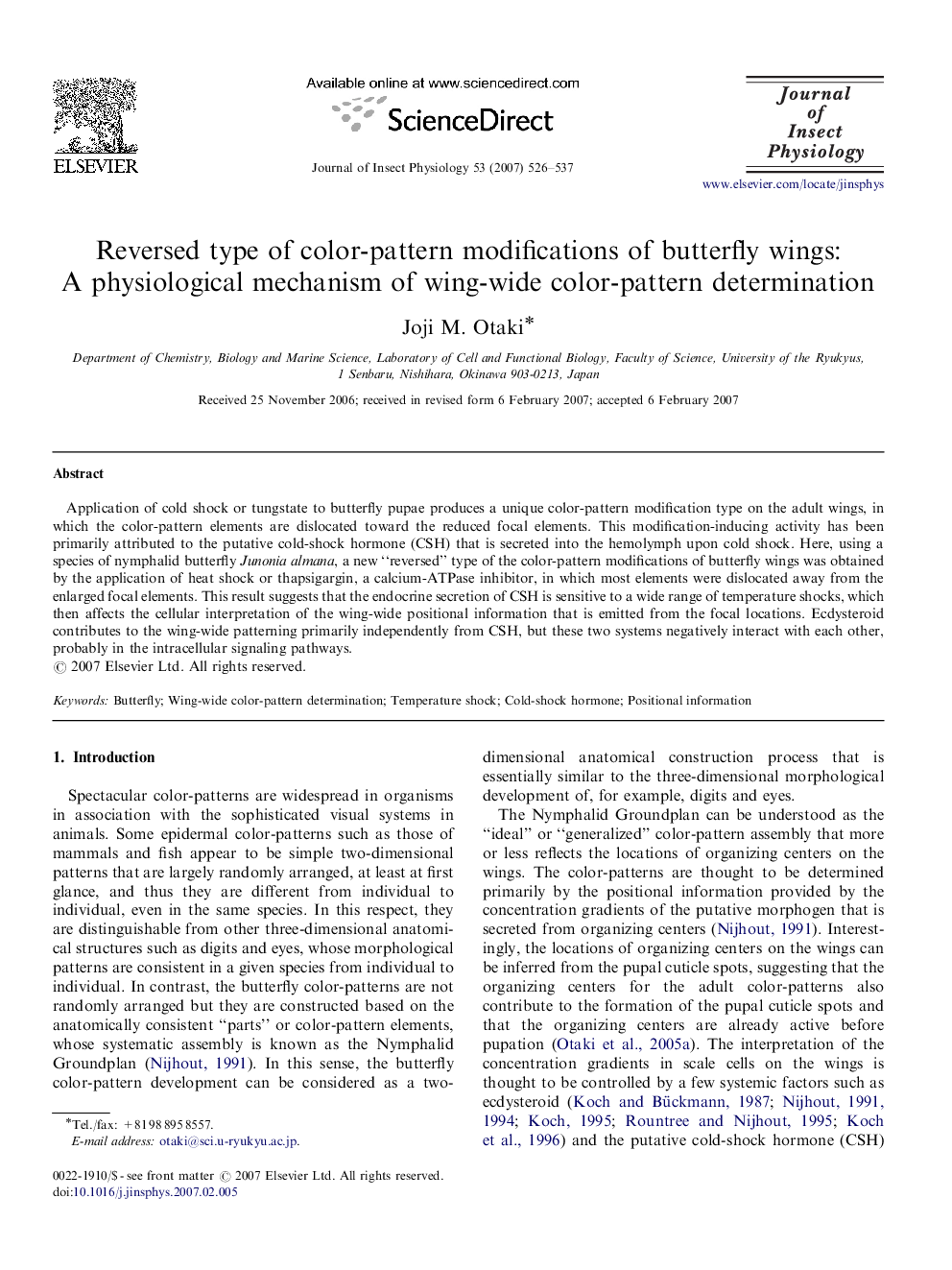| Article ID | Journal | Published Year | Pages | File Type |
|---|---|---|---|---|
| 2841593 | Journal of Insect Physiology | 2007 | 12 Pages |
Application of cold shock or tungstate to butterfly pupae produces a unique color-pattern modification type on the adult wings, in which the color-pattern elements are dislocated toward the reduced focal elements. This modification-inducing activity has been primarily attributed to the putative cold-shock hormone (CSH) that is secreted into the hemolymph upon cold shock. Here, using a species of nymphalid butterfly Junonia almana, a new “reversed” type of the color-pattern modifications of butterfly wings was obtained by the application of heat shock or thapsigargin, a calcium-ATPase inhibitor, in which most elements were dislocated away from the enlarged focal elements. This result suggests that the endocrine secretion of CSH is sensitive to a wide range of temperature shocks, which then affects the cellular interpretation of the wing-wide positional information that is emitted from the focal locations. Ecdysteroid contributes to the wing-wide patterning primarily independently from CSH, but these two systems negatively interact with each other, probably in the intracellular signaling pathways.
